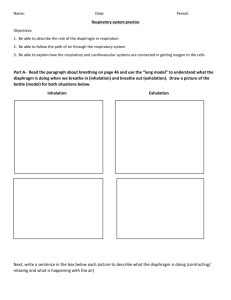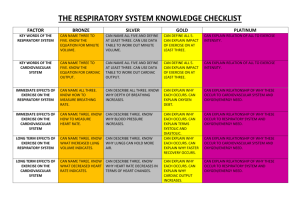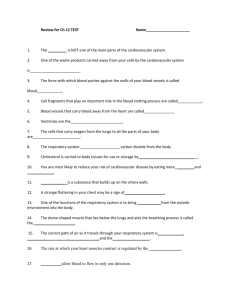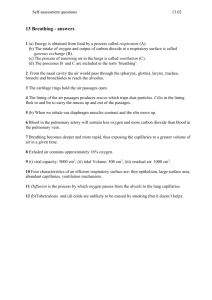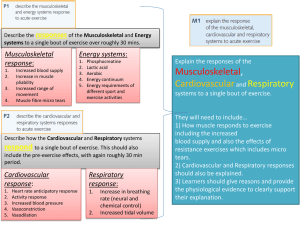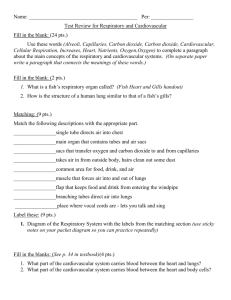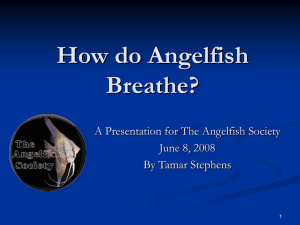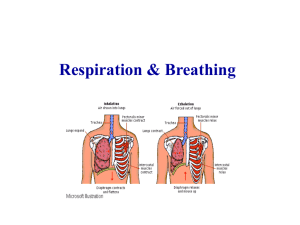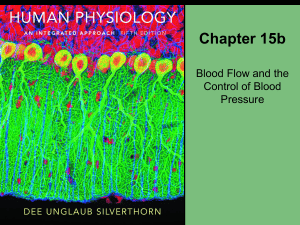Quest Review for Respiratory and Cardiovascular
advertisement
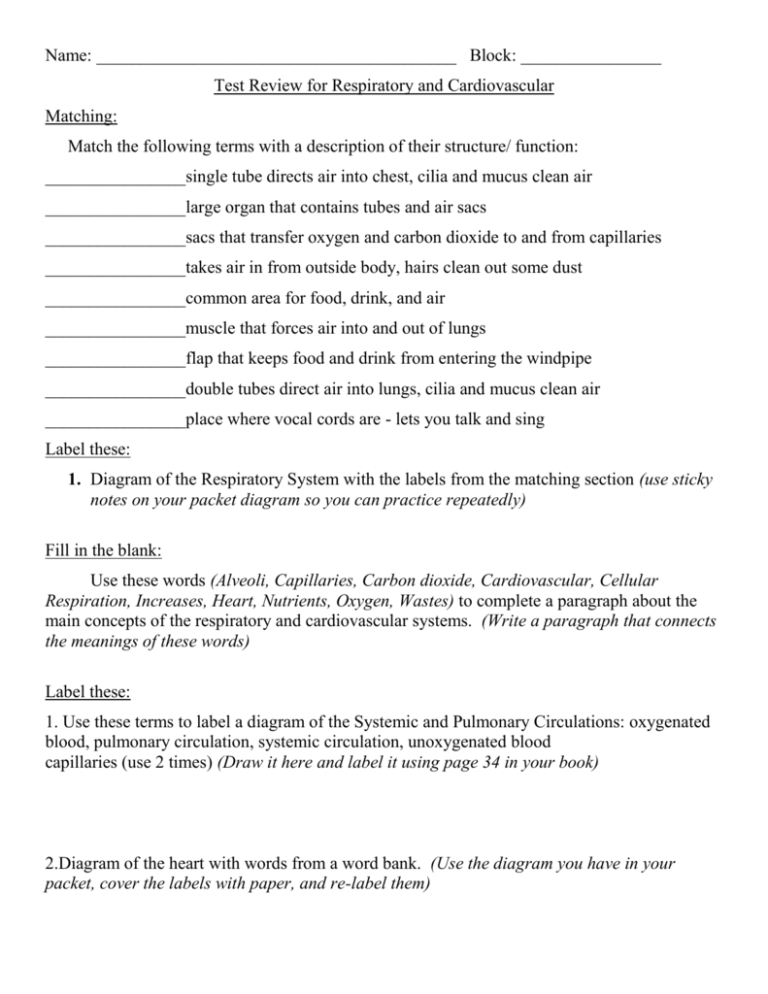
Name: _________________________________________ Block: ________________ Test Review for Respiratory and Cardiovascular Matching: Match the following terms with a description of their structure/ function: ________________single tube directs air into chest, cilia and mucus clean air ________________large organ that contains tubes and air sacs ________________sacs that transfer oxygen and carbon dioxide to and from capillaries ________________takes air in from outside body, hairs clean out some dust ________________common area for food, drink, and air ________________muscle that forces air into and out of lungs ________________flap that keeps food and drink from entering the windpipe ________________double tubes direct air into lungs, cilia and mucus clean air ________________place where vocal cords are - lets you talk and sing Label these: 1. Diagram of the Respiratory System with the labels from the matching section (use sticky notes on your packet diagram so you can practice repeatedly) Fill in the blank: Use these words (Alveoli, Capillaries, Carbon dioxide, Cardiovascular, Cellular Respiration, Increases, Heart, Nutrients, Oxygen, Wastes) to complete a paragraph about the main concepts of the respiratory and cardiovascular systems. (Write a paragraph that connects the meanings of these words) Label these: 1. Use these terms to label a diagram of the Systemic and Pulmonary Circulations: oxygenated blood, pulmonary circulation, systemic circulation, unoxygenated blood capillaries (use 2 times) (Draw it here and label it using page 34 in your book) 2.Diagram of the heart with words from a word bank. (Use the diagram you have in your packet, cover the labels with paper, and re-label them) 3.Diagram of the three types of blood vessels. (Re-draw and describe each, then label them) Fill in the blank: 1. List the parts of the cardiovascular system in order of blood flow. (List them - starting with the vena cava – see back of heart diagram ) Multiple Choice: 1. Why does the left ventricle of the heart have a thicker wall? ________________________________________________________ 2. What are the characteristics of each of the three types of blood vessels? a. Have very thick walls to take blood away from heart ____________________ b. Have fairly thick walls and return blood to heart _______________________ c. Have very thin walls – allows oxygen and carbon dioxide to move to blood ________________________________ 3. What are the functions of the four components of blood? a. Yellowish fluid – contains salts, minerals, nutrients _____________________ b. Carries oxygen and some carbon dioxide _____________________________ c. Fights infections ________________________________________________ d. Clots blood ____________________________________________________ 4. What is hemoglobin and what does it do? _____________________________ ______________________________________________________________ (See cardiovascular/circulatory system outline) Fill in the blank 1. How many chambers does a fish heart have? (Fish Heart and Gills handout) 2. What is a fish’s respiratory organ called? (Fish Heart and Gills handout) 3. How is the structure of a human lung similar to that of a fish’s gills?
